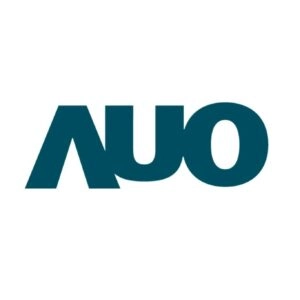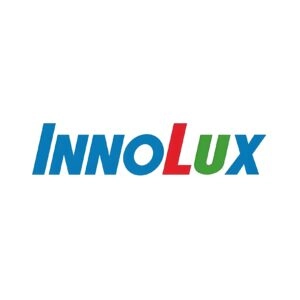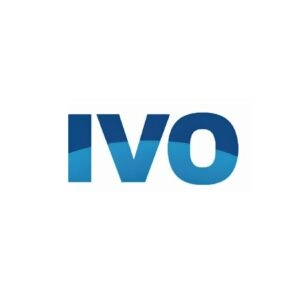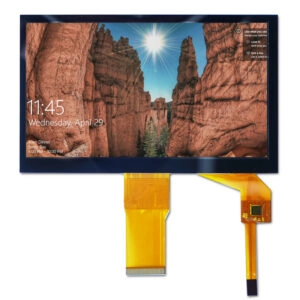1. What Makes Transparent Screens So Unique
Transparent digital signage is not just a slimmer form of usual monitors. Rather, it lets light flow through while still showing digital stuff—turning what used to be a wall into a simple frame. Unlike regular screens that hide views and break real sight paths, transparent displays allow actual items and digital adds to share the same eye area.
For instance, the manufacturer Miqidisplay offers Transparent LCD/OLED displays that include metal bezels, built-in media boards (HDMI/VGA), sizes from 10″ up to 98″ (4K/HD), and touchscreen choices.
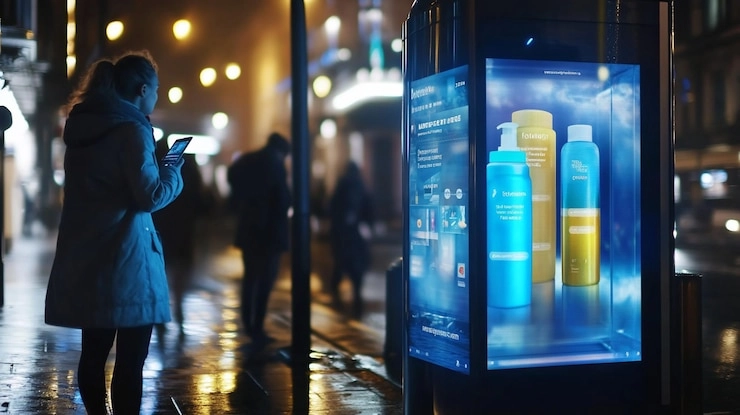
How the Technology Works
Transparent OLED (TOLED) panels glow on their own—each dot lights itself and when off, stays clear. This gives real blacks, no need for backlight, and a slimmer full panel. Yet, they need careful light control because background glow can lower contrast.
Transparent LCD (TLCD) panels drop the solid back layer of a normal LCD, and require a separate back-light behind them for stuff to show up. They can reach higher clear rates (in some cases up to ~70%) but lose some brightness or contrast.
The main point: transparent screens change a “block of glass” into a lively and blended eye surface.
2. Why Transparent Screens Are Gaining Serious Ground
These displays fix actual design issues in stores, events, shows and more.
Key Points Include
Shared spot for goods and content: In shop settings, a normal screen can block views and pull focus from the item. Transparent screens add content while keeping the product in sight behind.
Small space use & setup ease: For stands, museum cases, or fun activations, transparent screens bring movement and digital layers without heavy sign setups.
Fit with room light and building style: Many new shops and fancy spots like open layouts and smooth views. Transparent signage matches this, becoming part of the build rather than a bother.
Less eye mess and screen tiredness: Usual displays in busy areas can seem pushy; transparent screens can look quiet until turned on and blend with space rather than rule it.
Why Luxury Brands Are Buying Into Transparency

Luxury brands don’t hunt focus—they shape focus. Transparent digital signage matches this idea by keeping the real shape of the item and space, while still giving lively digital notes.
Simple style boosts seen worth: Transparent screens allow little eye block—adding content without crowding the view field or the show case.
Digital tales without changing the real area: Shop insides made with top materials (marble, brass, custom lights) can now add digital signage without losing build strength. Transparent displays can be built right into glass, shelves or walls, so that the real setting stays whole.
Personal, booked meetings: In top shop or private rooms, transparent displays help client care — for example, product adds starting when a VIP comes, or content fit to one person. The link is part of the item feel—not a separate tool.
4. Where Transparent Screens Work Best—and Where They Don’t
Best Use Cases
High-end shop fronts and in-window shows: Transparent displays glow when they keep product sight while adding digital move.
Museum items and cases: Things can be marked or moved while staying in view behind a clear glass face.
Car showrooms and product starts: Transparent panels let cars or idea goods sit behind digital adds like specs, animations or branding.
Hotel and luxury insides: Placed in glass walls, front desks or bar fronts, they keep the design feel while allowing room digital signage.
Use-Cases to Avoid
Bright outside areas: TLCDs fight under direct sun; even TOLEDs may not give enough light outdoors. Transparent displays usually do best in managed indoor light.
Areas needing strong, big-impact views: In quick-fashion or cheap shops where graphic power and light beat quiet, usual high-light LED or LCD signage may beat transparent tech.
Heavy info-giving screens: If the signage needs lots of text, boards, or detailed facts, a standard solid display still wins with contrast and easy reading.
5. Best Screens and Tools for Transparent Signage in 2025
Choose the Right Screen Type
TOLED: Great for luxury, room light, managed-light spots. Strong contrast, self-glow, no backlight needed—but higher price and light is key.
TLCD: Better clear rates, cheaper, useful for demos, shows or where backlighting can be managed—but depends on good light and may have lower contrast.
Screen Size and Form Factor Considerations
Transparent displays focus more on layering content than side viewing. Suggested size ranges:
22″–32″Transparent displays: For product counters, jewelry boxes, shelf-level shows.
46″–55″Transparent displays : For shop windows, interactive setups, walls.
65″+Transparent displays: Big-format uses like car showcases or large build blends.
Miqidisplay, for example, offers sizes from 21.5″, 32″, 43″, 49″, 55″, 65″, 75″, to 98″.
System Integration & Infrastructure
Because transparent signage mixes real and digital space, the support system counts:
A CMS that handles layering, clear settings, dot match with real things
Media players with 4K output, smooth refresh rates, tuned for transparent content
Remote planning, checks, multi-spot control
Touch or sensors if contact is needed (e.g., capacitive touch add on transparent panel)
Miqidisplay notes that their custom solution services include cable changes, touch upgrades (capacitive/resistive), connector tweaks, PCB changes, backlight tweaks.
6. Where Miqidisplay Fits Into Transparent Signage Projects
Miqidisplay sets itself as a one-stop display tech manufacturer, offering OEM/ODM services, tweaks and full project life support.
Key Advantages
Over 20 years’ industry know-how in LCD/TFT/OLED custom projects worldwide.
Large size transparent display product line: e.g., 77″ Interactive OLED Transparent Screen with Holographic Product Display — 3840×2160 resolution, 40% transmittance, 1–3 ms response time.
Flexible custom solution options: bezel-free designs, protective glass, touchscreen upgrades, interface options (HDMI/USB/WIFI), mounting solutions.
Certifications & quality standards: Their website lists ISO-9001, ISO-14001, TS-16949 certifications, strong quality/check process.
For brands or retailers looking to add transparent digital signage, Miqidisplay offers both the display hardware and the tweaks/integration base, which eases the path from idea to setup.
7. Wrapping Up: Bring Transparent Signage to Life with Miqidisplay
Transparent displays are no longer rare—they show a change in how brands mix real space with digital layers. From top shop to museum items and luxury insides, transparent screens allow a new kind of eye tale: quiet, blended, product-focused.
However, picking the right hardware, setting, and system are key. Transparent displays don’t just swap usual screens—they need careful blend: right light, mounting, content match, and software help.
From getting the right panel size and type, to tweaking the frame, mounting solution, and media link, Miqidisplay supports the full trip.
FAQ
Q1: Are transparent screens suitable for outdoor use?
Semi-outdoor or outdoor-ready models require high brightness (4,000–6,000 nits) and strong room-light control. Miqidisplay notes that while transparent screens can work outdoors, performance depends heavily on lighting conditions.
Q2: Can touchscreen functionality be added to transparent panels?
Yes — many transparent displays from Miqidisplay support capacitive or resistive touch upgrades, including custom cover glass, mounting options and interface changes.
Q3: What size ranges are available for transparent displays?
Miqidisplay offers standard sizes from 10″ up to 98″ for their Transparent LCD/OLED line. Common sizes include 21.5″, 32″, 43″, 49″, 55″, 65″, 75″, 98″.
Q4: How is customisation supported for projects?
Miqidisplay provides full OEM/ODM services: bezel-free design, protective glass, custom I/O interfaces, mounting options, cable changes, touch upgrades and more.
Q5: In which applications do transparent screens outperform standard displays?
Transparent screens shine where product sight must stay while digital content is added—luxury retail windows, museum showcases, automotive reveal setups, high-end interior settings. They are less ideal when light needs are very high, readings of thick text are required, or budget is super tight.
Elevate Your OEM/ODM Portfolio with Miqidisplay – Premier Transparent LCD/OLED Factory & Global Supplier
Miqidisplay stands as a fully linked manufacturer focusing on transparent LCD and OLED displays, giving Grade A panels with built-in media boards, HDMI/VGA/USB interfaces, and resolutions up to 4K (3840×2160).
From 10″ to 98″ sizes, options include capacitive and infrared touch, brightness levels from 350–500 cd/m², and working temps from -10℃ to 60℃ for tough indoor/outdoor uses.
As a one-stop provider for LCD, TFT, IPS, and OLED tech, Miqidisplay helps partners to roll out new solutions like holographic shop windows, jewelry cases, and car inside displays without supply chain risks.
Reach the Miqidisplay OEM team at mary@miqidisplay.com or WhatsApp: +86 188 7965 2960.
Change your transparent signage offers—team with the factory that makes the future of invisible displays.
